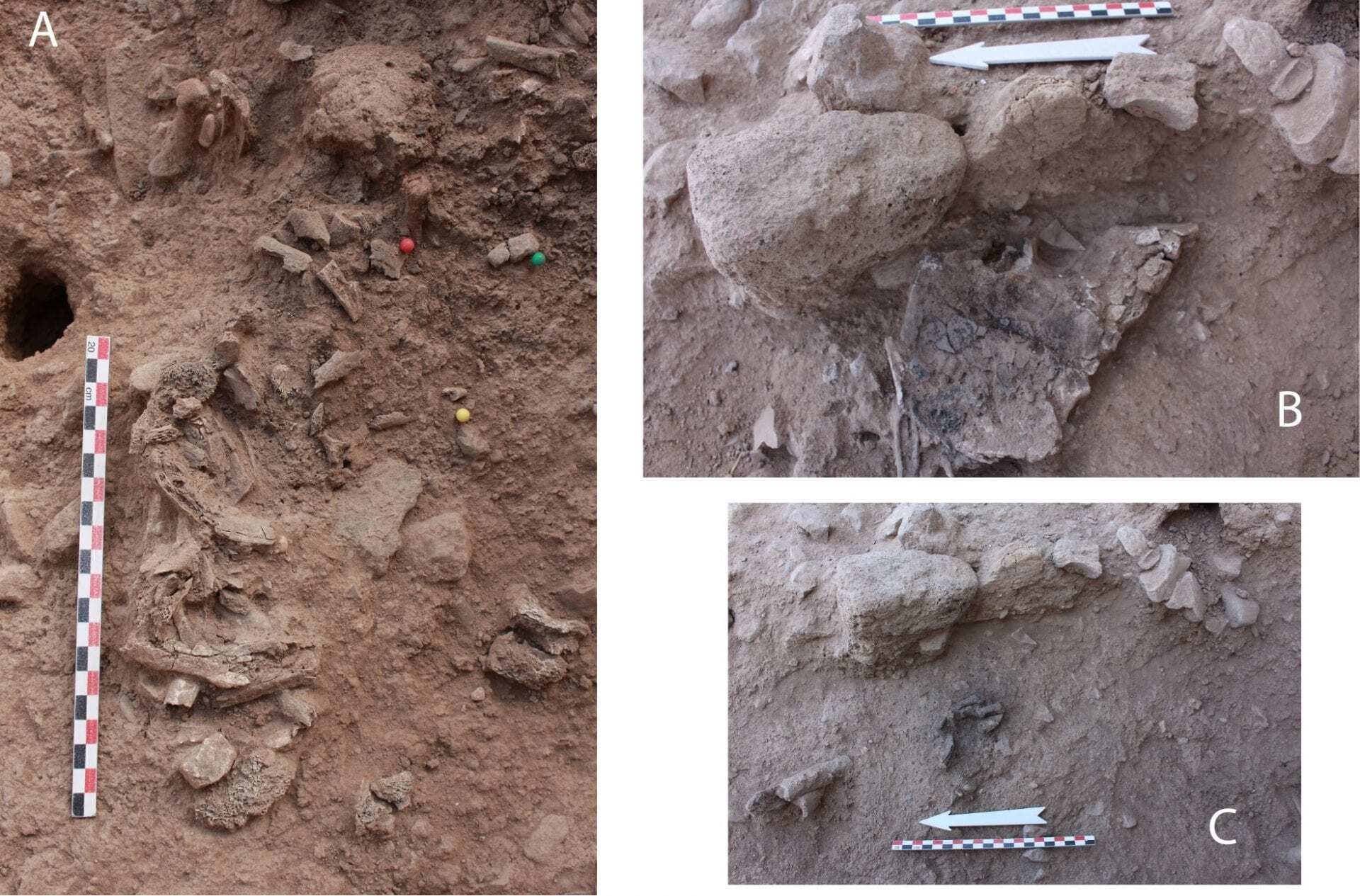Ancient people in the Near East had begun the practice of intentionally cremating their dead by the beginning of the 7th millennium BC, according to a study published by Fanny Bocquentin of the French National Center for Scientific Research (CNRS) and colleagues.
Excavations at the Neolithic site of Beisamoun in Northern Israel have uncovered an ancient cremation pit containing the remains of a corpse that appears to have been intentionally incinerated as part of a funerary practice. These remains were directly dated to between 7013-6700 BC, making them the oldest known example of cremation in the Near East.
The remains comprise most of one skeleton of a young adult. The bones show evidence of having been heated to temperatures of over 500°C shortly after death, and they sit inside a pit that appears to have been constructed with an open top and strong insulating walls. Microscopic plant remains found inside the pyre-pit are likely leftover from the fuel for the fire. This evidence leads the authors to identify this as an intentional cremation of a fresh corpse, as opposed to the burning of dry remains or a tragic fire accident.
This early cremation comes at an important period of transition in funerary practices in this region of the world. Old traditions were on the way out, such as the removal of the cranium of the dead and the burial of the dead within the settlement, while practices like cremation were new. This change in funeral procedure might also signify a transition in rituals surrounding death and the significance of the deceased within society. Further examination of other possible cremation sites in the region will help elucidate this important cultural shift.
Bocquentin says: “The funerary treatment involved in situ cremation within a pyre-pit of a young adult individual who previously survived from a flint projectile injury– the inventory of bones and their relative position strongly supports the deposit of an articulated corpse and not dislocated bones.” She adds, “This is a redefinition of the place of the dead in the village and in society.”
Header Image Credit : Bocquentin et al, 2020 (PLOS ONE, CC BY)





